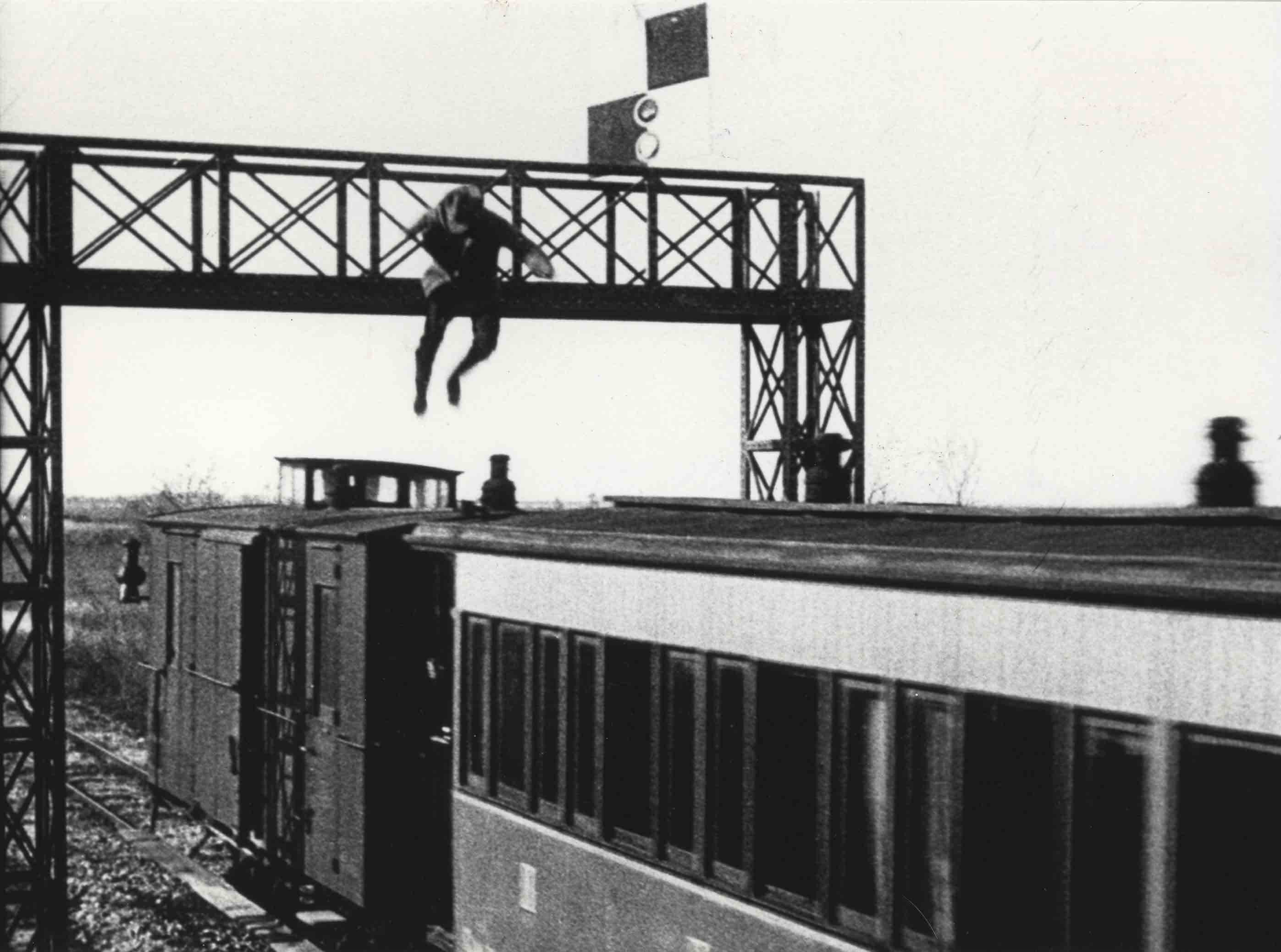LE RAILWAY DE LA MORT
(Their Lives for Gold)
Jean Durand (FR 1912)
Reminiscent of the shortened version of Éclair’s Protéa (1913) shown a few years ago in Bologna, Le Railway de la mort is less concerned with narrative continuity than with setting up dangerous stunts in ever more spectacular action sequences, one after another. A grim adventure tale that borrows liberally from Jack London, this “lust for gold” story turns two friends, Joe Barker and Tom Burke, into fierce antagonists in their frantic search for the secret claim that a dying gold miner has entrusted to them.
Shot on location in the Camargue region, the story supposedly is set on the Nebraska prairie, among and beyond towns named Rockfield, Silver City, and Fort William. The flat, empty, sometimes marshy landscape is familiar from Hamman’s other westerns, but now the chases involve not only horses and, as in Cent dollars mort ou vif, a train, but also the only automobile in the area. The exterior sets also are more elaborate than those of the previous films, often arranged in deep-space compositions. Especially notable, however, are the framed shots early on (more characteristic of Léonce Perret) looking out from darkened interiors, accentuated by deep blue toning, as when Joe opens a door to see Tom steal away in the night and then, framed by a tent opening, Tom goes off alone on horseback.
Most striking, of course, are the action sequences. Tom, in a long shot, leaps onto the last car of a passing train, quickly pursued by Joe on horseback; in a reverse-angle shot from within the train car, Tom and Joe trade gunshots. When Joe fails to catch the train, he races across the flooded prairie to a high signal arch over the tracks, from which he can drop onto the top of the last train car. There, looking ahead past the speeding locomotive, he has to confront the advancing fireman and toss him aside. After climbing onto the locomotive cab roof, he shoots the engineer and then uncouples the train cars. Now stranded with the angry passengers beside the stalled train cars, Tom rushes off across the marshy landscape, pulls himself across a river in a skiff, “borrows” a truck at Fort Williams, and reaches a point far enough ahead that he can drag two heavy timbers onto the rails. In a stunning long shot, the locomotive hits the timbers, flips over on its side, plows into the dirt, and Joe, in a cut-in closer shot, crawls out of the cab window, barely alive. In the final sequence, months later, Joe discovers the mining claim that Tom is now working. He stealthily approaches Tom’s storehouse of explosives and, softly silhouetted through gingham curtains, opens a window to toss a burning brand inside. When the smoke of the explosions clears, the whole site is in ruins, and a dissolve reveals the dying Tom crawling to Joe’s body and grasping from his clutched hand a few tiny gold nuggets.
Le Railway de la mort sustains this narrative drive with such confidence that, despite any logical discrepancies in its handling of space and time, the film won special praise from G. H. Blaisdell in Moving Picture World (10 August 1912).
Richard Abel

scen: Joë Hamman.
cast: Joë Hamman (Joe Barker), Max Dhartigny (Tom Burke, il rivale/his rival), Ernest Bourbon (macchinista/engineer), Berthe Dagmar, Gaston Modot (passeggeri/train passengers), Edouard Grisollet (controllore/conductor).
prod: Gaumont.
uscita/rel: 14.06.1912.
copia/copy: DCP, 480 m., 17’13” (?? fps), col. (imbibito e virato/tinted & toned); did./titles: FRA.
fonte/source: Gaumont Pathé Archives, Saint-Ouen, Paris.


 Italiano
Italiano